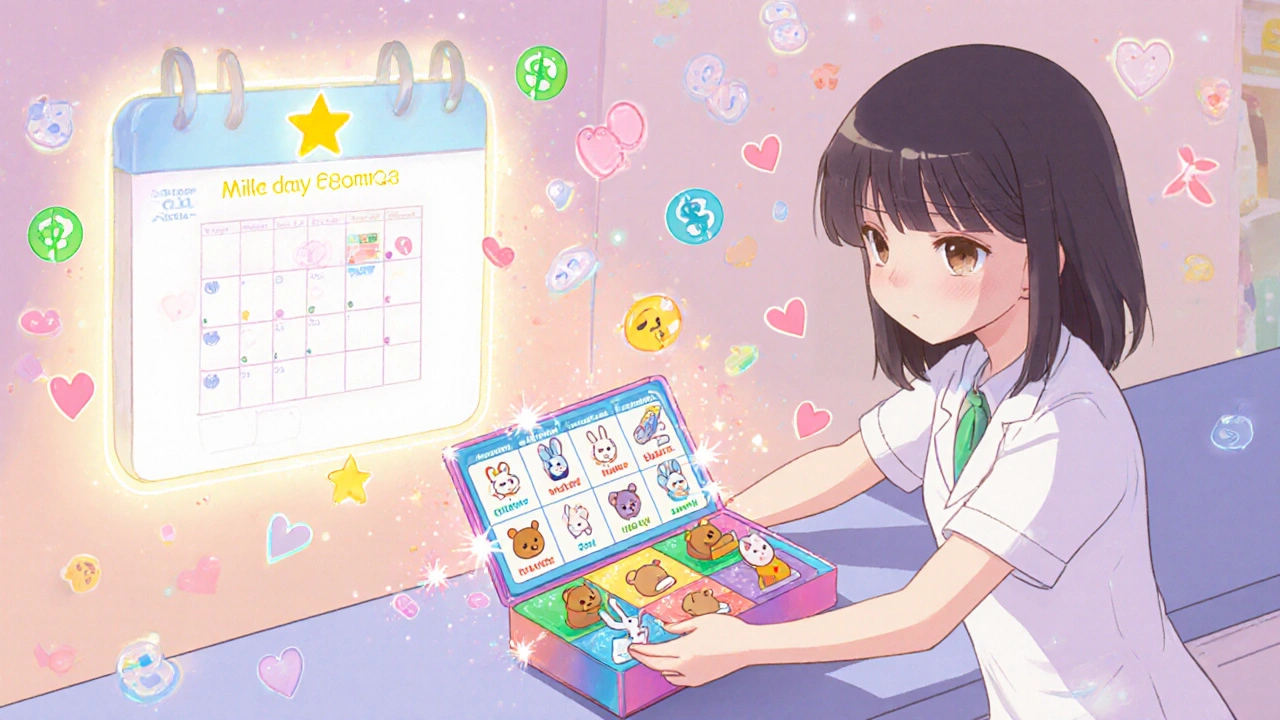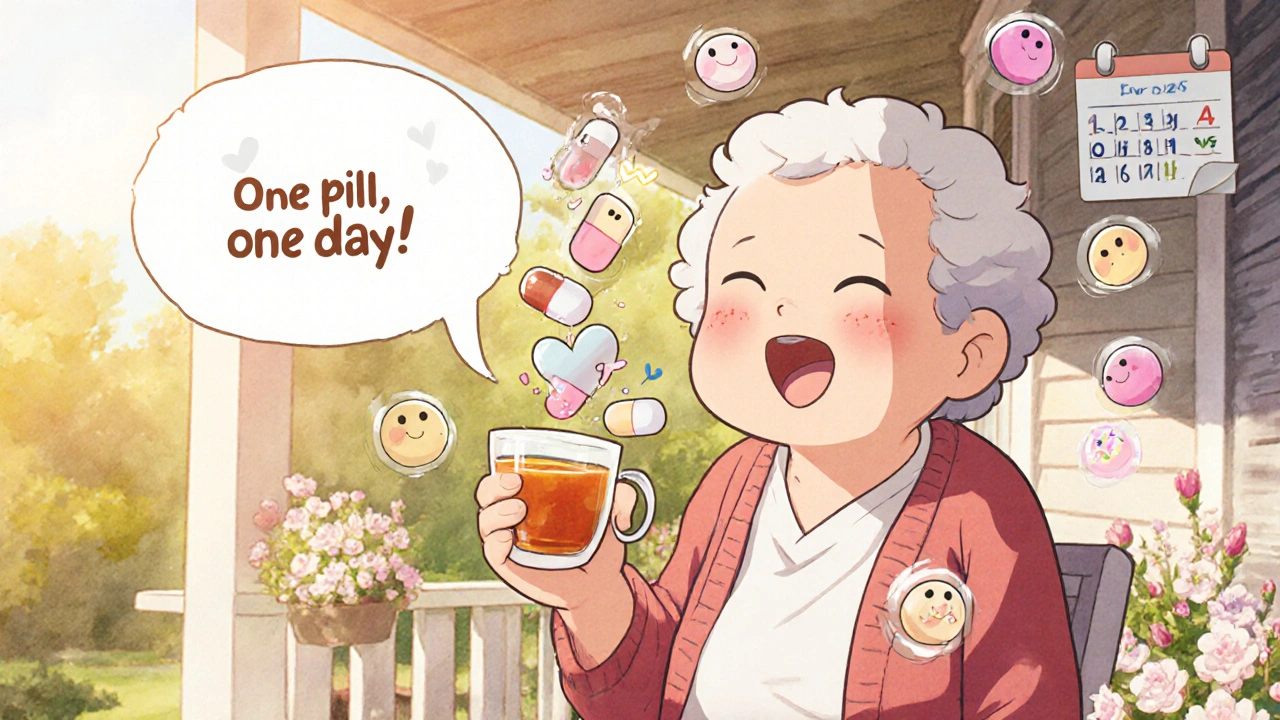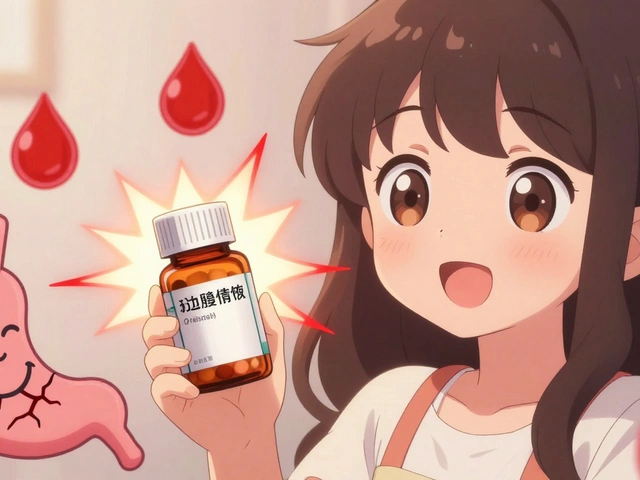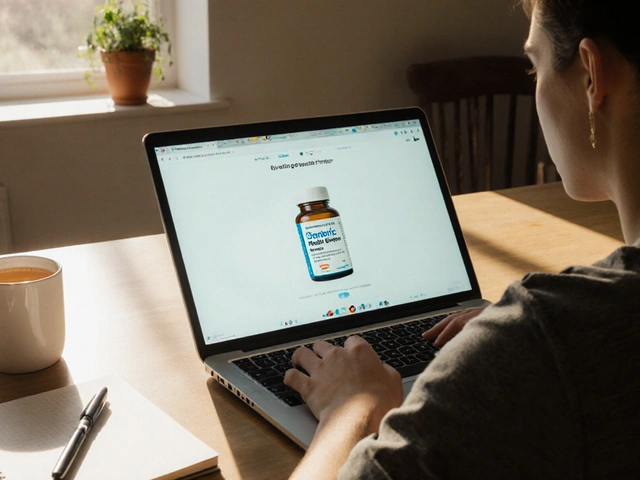Managing multiple prescriptions is exhausting. You’ve got pills for your blood pressure, diabetes, cholesterol, arthritis, and maybe even depression. Each one has a different refill schedule. One needs a refill every 30 days. Another lasts 90. You’re juggling calendars, pharmacy trips, and copays that add up fast. By the time you’ve paid for eight separate refills in a month, you’ve spent more on out-of-pocket costs than some people pay for a monthly phone bill. And if you skip a dose because it’s too expensive or too confusing? That’s when hospital visits start piling up.
What Medication Synchronization Actually Does
Medication synchronization-often called "med sync"-isn’t magic. It’s a simple system built by pharmacists to fix a broken system. Instead of getting your blood pressure pills on the 5th, your diabetes meds on the 12th, and your cholesterol drug on the 28th, med sync moves them all to one day each month. You walk into the pharmacy once, pick up everything you need, and go. No more scrambling. No more surprise copays scattered across the month. It works like this: you talk to your pharmacist. They look at every prescription you’re taking-prescription and over-the-counter. They check your insurance plan, your refill history, and your dosing schedule. Then, they adjust some of your supplies. Maybe you get a 15-day "short fill" of your blood pressure med so it lines up with your 30-day diabetes pill. After that, everything refills together. Next month, you get all your meds on the same day. Again. And again. Every month. This isn’t just about convenience. A 2021 CMS study found that Medicare patients using med sync had 23.6% fewer hospital visits related to medication errors or missed doses. That’s not a small number. It’s life-changing.Why Copays Add Up Faster Than You Think
Here’s the hidden cost: every time you pick up a prescription, you pay a copay. Even if your insurance covers 80% of the drug cost, you still pay that copay-$10, $20, $50-each time. If you’re on eight medications, that’s eight copays per month. At $20 each? That’s $160 a month. $1,920 a year. And it gets worse. Many insurance plans use tiered formularies. You might pay $10 for a Tier 1 generic, $45 for a Tier 2 brand, and $120 for a Tier 3 specialty drug. If you’re on three Tier 3 drugs? You’re paying $360 just in copays every month. That’s not sustainable. And if you skip a dose because you can’t afford it? That’s when your blood pressure spikes, your A1C climbs, and your kidneys start to suffer. The NIH found that for every 10% increase in out-of-pocket costs, people use 2.3% fewer medications. That’s not just inconvenient-it’s dangerous.How to Get Started with Med Sync
You don’t need a doctor’s note. You don’t need special approval. You just need to walk into your pharmacy and ask.- Ask your pharmacist if they offer medication synchronization. Most major chains-CVS, Walgreens, Rite Aid, and even local independents-do. CVS alone has over 4 million people enrolled in their ScriptSync program.
- Bring a list of every medication you take, including vitamins and over-the-counter drugs. Don’t assume they know. Pharmacists need the full picture.
- Let them check your insurance. Some plans restrict early refills or block synchronization for certain drugs. They’ll know.
- Be ready for a one-time adjustment. You might get a smaller supply of one or two meds to align the dates. It’s temporary. They’ll explain why.
- Choose your sync day. Pick a day that works for you-like the first Friday of the month. Stick with it. Set a phone reminder.

When Med Sync Doesn’t Work-and What to Do Instead
Med sync isn’t perfect. Some meds just won’t sync. Acute medications-like antibiotics or painkillers-aren’t meant for monthly refills. If you’re on a 90-day supply of a maintenance drug and a 30-day supply of another, the pharmacy might need to request an early refill exception from your insurer. Medicare Part D rules limit early refills to two days before you’ve used 70% of your current supply. That can cause delays. If your pharmacy says they can’t sync a drug, ask them to call your insurance for a prior authorization. Many times, they’ll approve it if you explain it’s for adherence. If you’re on a specialty drug-something expensive like a biologic for rheumatoid arthritis or multiple sclerosis-med sync alone won’t fix your copay problem. That’s where copay accumulators come in. Many insurers now use copay accumulator programs. These programs don’t count manufacturer coupons toward your deductible. So if you get a $5,000 coupon from the drugmaker, your insurance says, "That doesn’t count." You still pay your full deductible. Suddenly, your $50 copay turns into a $650 bill. This is real. People on Reddit have posted about it. KFF reported in 2023 that these programs make specialty drugs unaffordable for many. If you’re on a specialty drug, talk to your pharmacist about alternative funding programs. Some drugmakers now offer direct financial aid that bypasses the insurance copay system entirely. Ask: "Is there a patient assistance program I qualify for?" Don’t assume you don’t qualify. Many people do.Combination Pills: The Hidden Shortcut
Sometimes, the best way to reduce copays is to reduce the number of pills you take. That’s where combination medications come in. Instead of taking three separate pills-say, one for blood pressure, one for cholesterol, one for diabetes-you might be able to take one pill that contains all three. These are called fixed-dose combinations. Between 2018 and 2023, the FDA approved 127 new ones. A 2022 study by MaxCareRx found that patients on combination pills missed doses 27% less often than those on separate pills. Fewer pills = fewer refills = fewer copays. Ask your doctor: "Is there a combination pill that could replace my current regimen?" Don’t be afraid to push. Some doctors assume you’re used to your current meds. But if you’re paying $100 a month for three separate prescriptions, a single combination pill could cut that to $40.







Rachael Gallagher
November 24, 2025This system is just another way the pharmaceutical industry keeps us hooked. They don't care if you live or die-they care about your copay receipts. Med sync? Sounds like a PR stunt to make them look good while they jack up drug prices.
They'll sync your pills but not your insurance. Don't fall for it.